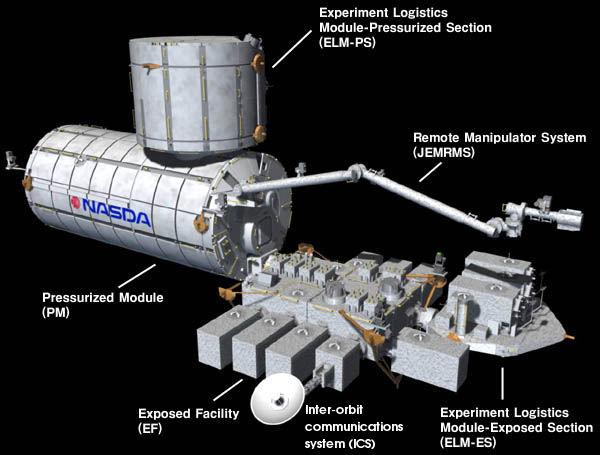|
International Charter 'Space And Major Disasters'
The International Charter Space and Major Disasters is a non-binding charter which provides for the charity (practice), charitable and humanitarian acquisition and transmission of artificial satellite, satellite data to relief organizations in the event of major disasters. Initiated by the European Space Agency and the French space agency CNES after the United Nations Conference on the Exploration and Peaceful Uses of Outer Space, UNISPACE III conference held in Vienna, Austria, in July 1999, it officially came into operation on November 1, 2000, after the Canadian Space Agency signed onto the charter on October 20, 2000. Their space assets were then, respectively, European Remote-Sensing Satellite, ERS and ENVISAT, SPOT (satellites), SPOT and Formosat, and RADARSAT. The assorted satellite assets of various corporate, national, and international space agency, space agencies and entities provide for humanitarian coverage which is wide albeit contingent. First activated f ... [...More Info...] [...Related Items...] OR: [Wikipedia] [Google] [Baidu] |
Charter
A charter is the grant of authority or rights, stating that the granter formally recognizes the prerogative of the recipient to exercise the rights specified. It is implicit that the granter retains superiority (or sovereignty), and that the recipient admits a limited (or inferior) status within the relationship, and it is within that sense that charters were historically granted, and it is that sense which is retained in modern usage of the term. In early medieval Britain, charters transferred land from donors to recipients. The word entered the English language from the Old French ', via -4; we might wonder whether there's a point at which it's appropriate to talk of the beginnings of French, that is, when it wa ... ', via Latin ', and ultimately from Ancient Greek">Greek (', meaning "layer of papyrus"). It has come to be synonymous with a document that sets out a grant of rights or privileges. Other usages The term is used for a special case (or as an exception) of an ... [...More Info...] [...Related Items...] OR: [Wikipedia] [Google] [Baidu] |
Image Resolution
Image resolution is the level of detail of an image. The term applies to digital images, film images, and other types of images. "Higher resolution" means more image detail. Image resolution can be measured in various ways. Resolution quantifies how close lines can be to each other and still be visibly ''resolved''. Resolution units can be tied to physical sizes (e.g. lines per mm, lines per inch), to the overall size of a picture (lines per picture height, also known simply as lines, TV lines, or TVL), or to angular subtense. Instead of single lines, line pairs are often used, composed of a dark line and an adjacent light line; for example, a resolution of 10 lines per millimeter means 5 dark lines alternating with 5 light lines, or 5 line pairs per millimeter (5 LP/mm). Photographic lens are most often quoted in line pairs per millimeter. Types The resolution of digital cameras can be described in many different ways. Pixel count The term ''resolution'' is often considered eq ... [...More Info...] [...Related Items...] OR: [Wikipedia] [Google] [Baidu] |
GeoEye 1
GeoEye Inc. (formerly Orbital Imaging Corporation, or ORBIMAGE) was an American commercial satellite imagery company based in Herndon, Virginia. GeoEye was merged into the DigitalGlobe corporation on January 29, 2013. The company was founded in 1992 as a division of Orbital Sciences Corporation in the wake of the 1992 Land Remote Sensing Policy Act which permitted private companies to enter the satellite imaging business. The division was spun off in 1997. It changed its name to GeoEye in 2006 after acquiring Denver, Colorado-based Space Imaging Corporation for $58 million. Space Imaging was founded and controlled by Raytheon and Lockheed Martin. Its principal asset was the IKONOS satellite; the company was founded in the 1990s for the purpose of managing the project that became the IKONOS satellite. Although ORBIMAGE's first chairman was Orbital chairman David W. Thompson, and Orbital at the time owned more than 60 percent of the stock, it no longer has a substantial inte ... [...More Info...] [...Related Items...] OR: [Wikipedia] [Google] [Baidu] |
Landsat
The Landsat program is the longest-running enterprise for acquisition of satellite imagery of Earth. It is a joint NASA / USGS program. On 23 July 1972, the Earth Resources Technology Satellite was launched. This was eventually renamed to Landsat 1 in 1975. The most recent, Landsat 9, was launched on 27 September 2021. The instruments on the Landsat satellites have acquired millions of images. The images, archived in the United States and at Landsat receiving stations around the world, are a unique resource for global change research and applications in agriculture, cartography, geology, forestry, regional planning, surveillance and education, and can be viewed through the U.S. Geological Survey (USGS) "EarthExplorer" website. Landsat 7 data has eight spectral bands with spatial resolutions ranging from ; the temporal resolution is 16 days. Landsat images are usually divided into scenes for easy downloading. Each Landsat scene is about 115 miles long and 115 miles wide ( ... [...More Info...] [...Related Items...] OR: [Wikipedia] [Google] [Baidu] |
USGS
The United States Geological Survey (USGS), founded as the Geological Survey, is an government agency, agency of the United States Department of the Interior, U.S. Department of the Interior whose work spans the disciplines of biology, geography, geology, and hydrology. The agency was founded on March 3, 1879, to study the landscape of the United States, its natural resources, and the natural hazards that threaten it. The agency also makes maps of planets and moons, based on data from List of NASA missions, U.S. space probes. The sole scientific agency of the U.S. Department of the Interior, USGS is a fact-finding research organization with no regulatory responsibility. It is headquartered in Reston, Virginia, with major offices near Lakewood, Colorado; at the Denver Federal Center; and in NASA Research Park in California. In 2009, it employed about 8,670 people. The current motto of the USGS, in use since August 1997, is "science for a changing world". The agency's previous s ... [...More Info...] [...Related Items...] OR: [Wikipedia] [Google] [Baidu] |
ALOS
Advanced Land Observing Satellite (ALOS), also called Daichi (a Japanese word meaning "land"), was a 3810 kg Japanese satellite launched in 2006. After five years of service, the satellite lost power and ceased communication with Earth, but remains in orbit. Launch ALOS was launched from Tanegashima, Japan, on 24 January 2006 by H-IIA No. 8. The launch had been delayed three times by weather and sensor problems. Mission The satellite contained three sensors that were used for cartography and disaster monitoring of Asia and the Pacific Ocean. The Japan Aerospace Exploration Agency (JAXA) initially hoped to be able to launch the successor to ALOS during 2011, but this plan did not materialize. In 2008, it was announced that the images generated by ALOS were too blurry to be of any use for map making. Only 52 of 4,300 images of Japan could be updated based on data from ALOS. Then, JAXA announced the problem was solved. ALOS was used to analyze several disaster sites. I ... [...More Info...] [...Related Items...] OR: [Wikipedia] [Google] [Baidu] |
JAXA
The is the Japanese national air and space agency. Through the merger of three previously independent organizations, JAXA was formed on 1 October 2003. JAXA is responsible for research, technology development and launch of satellites into orbit, and is involved in many more advanced missions such as asteroid exploration and possible human exploration of the Moon. Its motto is ''One JAXA'' and its corporate slogan is ''Explore to Realize'' (formerly ''Reaching for the skies, exploring space''). History On 1 October 2003, three organizations were merged to form the new JAXA: Japan's Institute of Space and Astronautical Science (ISAS), the National Aerospace Laboratory of Japan (NAL), and National Space Development Agency of Japan (NASDA). JAXA was formed as an Independent Administrative Institution administered by the Ministry of Education, Culture, Sports, Science and Technology (MEXT) and the Ministry of Internal Affairs and Communications (MIC). Before the mer ... [...More Info...] [...Related Items...] OR: [Wikipedia] [Google] [Baidu] |
CONAE
The National Space Activities Commission (Spanish language , Spanish: ''Comisión Nacional de Actividades Espaciales'', CONAE) is the civilian agency of the government of Argentina in charge of the national space programme. History Sociedad Argentina Interplanetaria During the 1940s, Teófilo Tabanera organized a group of foreign and Argentine specialists as the Sociedad Argentina Interplanetaria, SAI (Argentine Interplanetary Society). Tabanera's efforts ensured that Argentina was the first Latin American nation to create a spaceflight organisation and in 1952 was one of the founding members of the International Astronautical Federation. Argentine Aldo Cocca was a pioneer in space law and helped originate the idea of space being the common heritage of humankind, later enshrined in United Nations treaties of the 1960s. Comisión Nacional de Investigaciones Espaciales In 1960, Tabanera was named head of the newly created ''Comisión Nacional de Investigaciones Espaciales' ... [...More Info...] [...Related Items...] OR: [Wikipedia] [Google] [Baidu] |
ISRO
The Indian Space Research Organisation (ISRO ) is India's national space agency, headquartered in Bengaluru, Karnataka. It serves as the principal research and development arm of the Department of Space (DoS), overseen by the Prime Minister of India, with the Chairman of ISRO also serving as the chief executive of the DoS. It is primarily responsible for space-based operations, space exploration, international space cooperation and the development of related technologies. The agency maintains a constellation of imaging, communications and remote sensing satellites. It operates the GAGAN and IRNSS satellite navigation systems. It has sent three missions to the Moon and one mission to Mars. Formerly known as the Indian National Committee for Space Research (INCOSPAR), ISRO was set up in 1962 by the Government of India on the recommendation of scientist Vikram Sarabhai. It was renamed as ISRO in 1969 and was subsumed into the Department of Atomic Energy (DAE). The establi ... [...More Info...] [...Related Items...] OR: [Wikipedia] [Google] [Baidu] |
GOES
The Geostationary Operational Environmental Satellite (GOES), operated by the United States' National Oceanic and Atmospheric Administration (NOAA)'s National Environmental Satellite, Data, and Information Service division, supports weather forecasting, severe storm tracking, and meteorology research. Spacecraft and ground-based elements of the system work together to provide a continuous stream of environmental data. The National Weather Service (NWS) and the Meteorological Service of Canada use the GOES system for their North American weather monitoring and forecasting operations, and scientific researchers use the data to better understand land, atmosphere, ocean, and climate dynamics. The GOES system uses geosynchronous equatorial satellites that, since the launch of SMS-1 in 1974, have been a basic element of U.S. weather monitoring and forecasting. The procurement, design, and manufacture of GOES satellites is overseen by NASA. NOAA is the official provider of both GOES ... [...More Info...] [...Related Items...] OR: [Wikipedia] [Google] [Baidu] |







